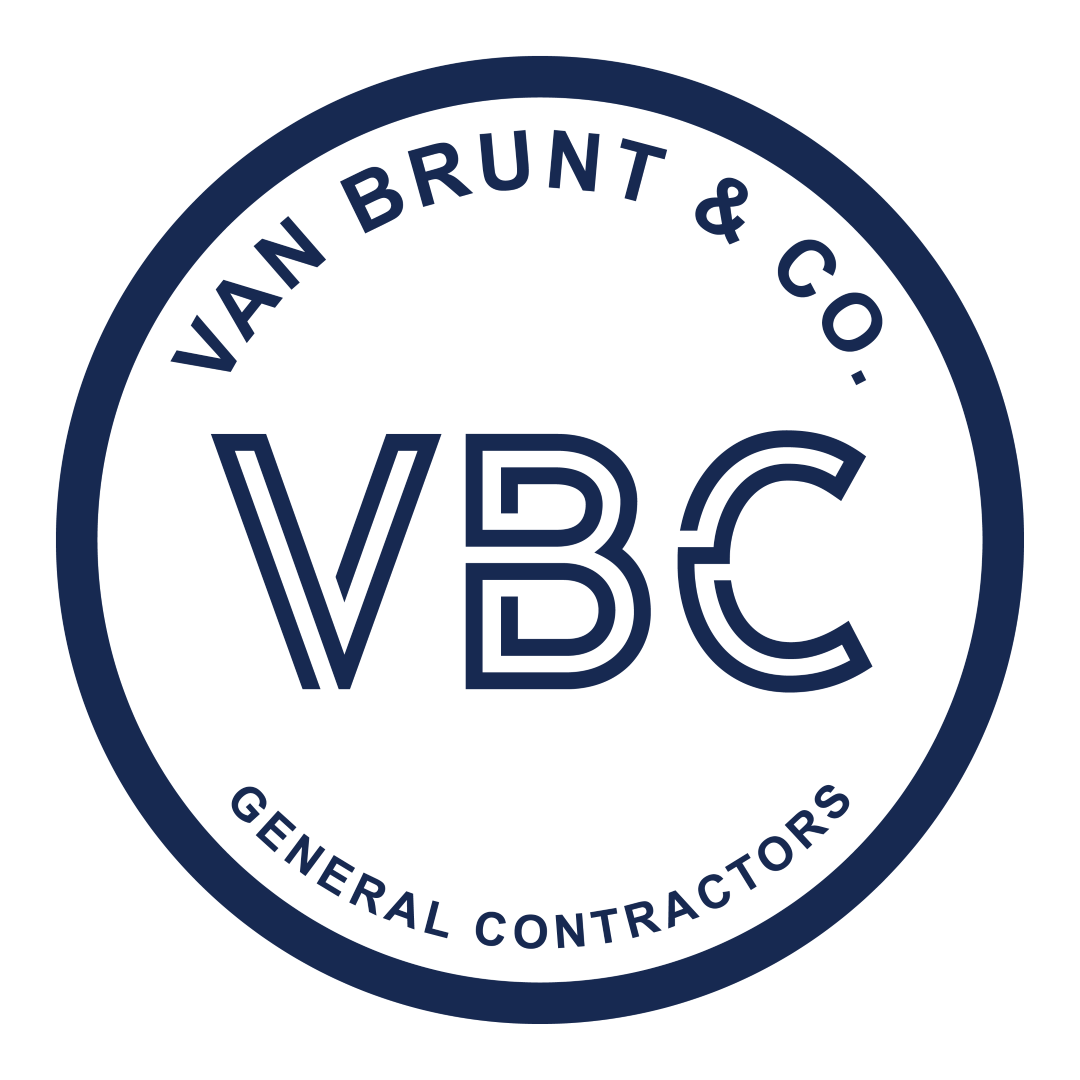Clear communication is the cornerstone of every successful restaurant construction project. If you want your restaurant to truly reflect your brand, your first step is choosing a restaurant builder with a proven approach, like those at Van Brunt & Company. Learning how to effectively share your vision will help ensure every detail is executed with precision.
Picture this: An excited restaurant owner meets with a builder, full of hopes and ideas. But a few weeks later, frustrations mount. Walls go up in the wrong place. Colors are off. The kitchen workflow feels clunky. The owner wonders, “Where did things go wrong?” Most project failures aren’t about poor craftsmanship, they happen when visions aren’t fully shared or understood. Many entrepreneurs feel this anxiety. Will the builder get it? Will the end result match what’s in your mind? Those first conversations set the tone for everything that follows.
If you’ve ever worried about miscommunication, this article is your playbook. You’ll learn not just how to articulate your concept, but also the essential questions to ask, how to clarify expectations in builder contracts, and the best ways to keep everyone aligned, start to finish.

Laying the Foundation for Clear Communication
Setting the right foundation is more than drafting blueprints; it’s about translating your vision into practical steps your builder can act on. Without a solid communication framework, even the best ideas can get lost.
Understanding Your Core Concept
Before you speak with any construction company, take time to crystalize your own restaurant vision, this is a crucial first step in effective restaurant construction planning. Ask yourself: What makes your concept unique? Is it an upscale steakhouse, a cozy bakery, or a modern fast-casual spot? What atmosphere do you want guests to feel when they walk in? Document your core values, brand personality, and target customer profile. Gather inspiration images, like mood boards, sample menus, or even competitor interiors you admire. This will help you communicate your concept visually and verbally. The more detailed you are, the better your builder can understand what you want. Harvard Business Review’s research shows that successful projects almost always start with a clear, shared vision. Remember, clarity at this stage reduces surprises down the line.
Defining Project Priorities
Not all elements of your vision will carry equal weight. Decide which aspects are absolutely non-negotiable, perhaps a custom bar, open kitchen, or signature entrance. List features that are “must-haves” and those that are “nice-to-haves.” Communicate this hierarchy early to your builder. This enables them to suggest budget-friendly alternatives for lower-priority items, or to push for creative solutions if space or permitting issues arise. For example, if local codes prevent your ideal patio design, a builder experienced in ground-up commercial construction can recommend alternatives that still capture your concept. Prioritizing in this way sets realistic expectations and helps manage changes later on a crucial detail highlighted by the National Restaurant Association’s best practices.
Creating Visual References
Even the most eloquent description can be misinterpreted. That’s why visual tools like sketches, mood boards, or digital renderings are invaluable. Bring these to every meeting. Share photos of other restaurants you love, materials you like, and color palettes that fit your brand. This isn’t about copying someone else; it’s about establishing a shared language with your builder. If you’re not sure how to organize your ideas, ask for guidance from a tenant finish construction expert, who can help translate creative concepts into actionable plans. When everyone can “see” the goal, alignment becomes much easier. The American Institute of Architects’ guidelines confirm that visual clarity is one of the strongest predictors of project success.

Core Communication Strategies with Your Builder
Strong communication isn’t just a one-time event. It’s an ongoing, structured process that ensures your vision remains the guiding force throughout construction.
Setting Expectations from Day One
The initial kick-off meeting with your builder is the single most important touchpoint. Use this time to articulate your project goals, timelines, budget range, and any special operational requirements. Don’t just discuss what you want, explain why. A builder who understands the reasoning behind your preferences is far more likely to propose solutions that fit your goals. Review their company’s background, and ask about their approach to vision alignment. Learn more about their structured approach to project management. The Centers for Disease Control and Prevention emphasizes the importance of clear communication protocols, especially for complex projects3. Setting this expectation early prevents confusion and keeps everyone accountable.
Asking the Right Questions
Many owners don’t realize how vital it is to probe their builder’s experience and processes. Reference your list of key questions to ask before hiring a restaurant builder to uncover how they handle client input, change requests, and problem-solving. Sample questions include: “Can you walk me through a time you had to pivot due to an unexpected design issue?” and “How will you update me on progress or changes?” Evaluate how they respond, not just what they say, but how clearly they explain technical concepts in simple language. If their answers leave you confused, keep looking.
Documenting Agreements and Changes
It’s easy for verbal agreements to be forgotten or misunderstood as the project evolves. That’s why detailed documentation is essential. Every discussion, decision, and approved change should be recorded in meeting minutes, email summaries, or through collaboration platforms. Clarify who is responsible for updates, and how often you’ll receive them. This habit reduces the risk of costly errors and disputes. A thorough restaurant builder contract or proposal should specify how communication will occur, how decisions are approved, and what the escalation process looks like if problems arise.

Turning Vision into Reality: Practical Implementation
Now that you’ve set the framework, it’s time to see your ideas take shape on the construction site. Consistency, clarity, and flexibility will make the difference.
Staying Involved Throughout the Build
You don’t have to micromanage, but regular site visits and status checks are essential. Attend scheduled walk-throughs and request updates at key project milestones. This isn’t just about catching mistakes, it’s about reinforcing your vision in real time. If you’re unable to visit in person, ask for detailed photo and video updates. Partnering with a trusted commercial remodeling company can provide the transparency you need to stay involved without disrupting the build. According to Construction Dive’s industry research, projects with active owner involvement are significantly more likely to finish on budget and meet design goals.
Collaborating with Your Builder’s Team
Remember, your restaurant builder may bring in designers, subcontractors, or engineers. Clear lines of communication with each stakeholder are key. Ask your project manager to set up recurring coordination meetings. Use collaborative platforms or shared document folders to centralize updates and design revisions. This team-based approach helps prevent miscommunication especially when changes to the original vision are necessary. When everyone’s on the same page, small adjustments won’t derail the overall concept. The U.S. General Services Administration’s design-build guide highlights the benefits of structured collaboration, noting faster project delivery and higher owner satisfaction scores.
Navigating Contracts and Proposals
Many misunderstandings happen because the contract isn’t clear about communication protocols or approval processes. Review every line of your builder’s proposal carefully. Make sure it specifies how changes will be requested, documented, and billed. If any part of the agreement is confusing, don’t hesitate to ask for clarification. Understanding your restaurant builder’s contract not only protects your investment, it also gives you leverage if issues arise. If needed, consult a construction attorney or third-party expert. The American Bar Association’s construction law resources provide valuable checklists for owners reviewing proposals. Thoughtful negotiation and detailed documentation now can prevent costly disputes later.

Advanced Communication: Maximizing Outcomes and Future Growth
Mastering communication doesn’t end at the ribbon-cutting. Ongoing dialogue ensures your restaurant stays aligned with your vision as it grows and evolves.
Leveraging Digital Tools for Alignment
Modern construction projects benefit from digital collaboration tools such as project management apps, virtual walk-throughs, and 3D design renderings. These tools enable real-time feedback and quick adjustments, even if you’re not on site. Discuss with your builder what technology platforms they use, and how you’ll be trained to review plans and changes. Digital archives make it easy to revisit decisions if questions arise months later. Leveraging these systems for communication can save time and money, and keep your vision front and center. The National Institute of Building Sciences reports that digital project management tools reduce miscommunication by 40% in complex builds.
Tracking Progress and Measuring Results
Don’t wait until the project is finished to assess success. Establish measurable goals from the outset, timeline, budget, design accuracy, and functionality. Incorporate detailed project documentation to track decisions, milestones, and any changes along the way. Set regular check-ins with your builder to review progress against these benchmarks. Use documented punch lists during final walkthroughs to catch any outstanding issues. Request a post-completion review meeting to discuss what went well and what could improve. By tracking performance, you ensure that the finished restaurant matches your original intent. This results-oriented approach is standard practice among top-performing construction firms, who credit clear goal-setting and thorough documentation for their reputation in the industry.
Planning for Future Success
As your restaurant opens and grows, keep the communication channel open with your builder for future improvements or expansions. Share feedback on what’s working and what isn’t, these insights are invaluable for both you and your builder on subsequent projects. Consider how a strong digital presence can support your grand opening. Professional organizations rely on comprehensive online visibility strategies to attract customers and build community buzz. By blending open communication, strategic tracking, and robust marketing, you position your restaurant for long-term success. Remember, understanding how to select and work with a restaurant builder will continue to benefit you as your business evolves and grows.
Conclusion
A successful restaurant build depends on strong, clear communication from concept to completion. By defining your vision, setting project priorities, and providing visual references, you give your builder the tools to turn your ideas into reality. Regular dialogue, careful documentation, and collaborative technology ensure everyone stays aligned and any changes are managed smoothly.
Remember, your relationship with your builder doesn’t end when the doors open. Continuous feedback and open channels of communication will support future improvements and help your business grow. Learning how to select and work with a restaurant builder is one of the most important investments you can make in your project’s success.
With the right communication strategies and a trusted partner, you’ll create a restaurant space that not only reflects your brand, but also delights your guests and supports your long-term goals. Start the conversation now and build with confidence. In addition to open communication with your builder, investing in targeted outreach strategies and comprehensive online visibility strategies will help your restaurant reach more customers and drive long-term success.
Frequently Asked Questions
How early should I bring my builder into the planning process?
Bring your builder in as soon as you have a concept and a budget range. Early involvement helps avoid costly design changes later.
What’s the best way to share my design ideas?
Use both words and visuals like mood boards, sketches, and photo examples all help communicate your vision.
How often should I request project updates?
Weekly updates are standard, but schedule more frequent check-ins during critical phases or major milestones.
What if my builder doesn’t understand my vision?
Clarify using visuals and written lists, and don’t hesitate to ask detailed follow-up questions.
How can I ensure changes are tracked?
Insist on written documentation for every approved change or new request, including costs and timelines.

